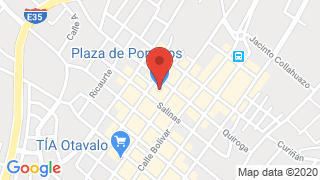Otavalo ponchos square




Plaza de los Ponchos, also known as the Centennial Market, is the setting for the largest artisan fair in northern Ecuador. Located in the province of Imbabura in the town of Otavalo.
The activity of the Plaza de Ponchos Ecuador is intended to market handicrafts, both locally, regionally, nationally and even internationally. The textiles of Otavalo are its flag of artisan production, however also offers other types of products made of wood, works of art with ceramics, wood, paint, metal etc..
Otavalo Market Location
Otavalo Market timetables
-
- The market fair is held every day from 07h00 to 18h00 recommended visit especially on Wednesdays and Saturdays
Otavalo market address
-
- Located between Sucre and Salinas Streets
In Otavalo Market the sales stands are comfortable for both the seller and the tourist, as the products are clearly displayed in the "callambas" which are circular cement stands located inside the square.
It should be noticed that the ethnic group with greater representation are the Otavalos, there are other ethnic groups that also come to this place as: the Kichwa Cayambis, Kichwa Caranquis, Afro-Ecuadorians, Mestizos, among others.
Otavalo Ponchos Square
The activity of the Plaza de Ponchos Ecuador is destined to commercialize artisan articles, at local, regional, national and even international level. The artisan production representative of the fair are the textiles of Otavalo, also there is artisan production in mud, painting, wood, jewelry, goldsmithing, saddlery, marzipan, ceramics, etc..
-
- Ponchos, scarves, gloves, hats, hats, shirts, trousers, tablecloths, belts, blouses, anacos, carpets, tapestries, bags, hammocks, espadrilles of textile origin.
- Andean musical instruments such as quena, sampoña, rondador, etc.
- Jewelry such as earrings, necklaces, bracelets
- Works of art such as paintings and sculptures
- Market Otavalo prices: The prices are affordable and depend on the type of product.
In the indigenous market of Otavalo you can carry out activities such as:
-
- Cultural tourism
- Shopping tourism
- Photography
-
- Market Otavalo recommendations:
-
- Wear comfortable shoes, camera, sunscreen
- It is important to be aware of belongings as it is a busy place and it is advised to be cautious and not to accept help from suspicious people. It is important to go to the tourist information center where the help of the case is offered, if you suffer from any kind of in case of suffering some mishap.
- The Plaza de Ponchos Ecuatorianos is surrounded by guarded parking for both light and heavy vehicles.
- If you encounter children, it is important to keep them on their toes and not to neglect them because they can get lost in the crowd.
- Tourist Attractions in Otavalo
- Its main street semipeatonizada, lighthouses with images of pendonearos, and of the armour.
- Indigenous dress elegantly dressed women, with their embroidered blouses and anacos, loaded if not a baby in the back, fruits or craft products in addition to the famous fabrics.
- Tourism house: Located in the streets Modesto Jaramillo and Quiroga, in front of the Centennial market or better known as "the square of the ponchos", in this building there is a center of attention and Tourist Information" to which you can request official information from Otavalo, as well as assistance in the contracted services.
Plaza de los Ponchos History
In Otavalo there were "merchant Indians" that were called mindaláes, during the XVI century. They did not live in their communities, but in strategic places from the point of view of commercial exchange, their position as traveling agents placed them in a privileged place. The centennial market or Plaza de Ponchos.
Plaza de los Ponchos creation was in 1929, the fair was held only on Saturdays, producers offered their products having on the floor the name "square centennial" of the fair comes from the year of its creation.

Publicado en:
Publicado por:



